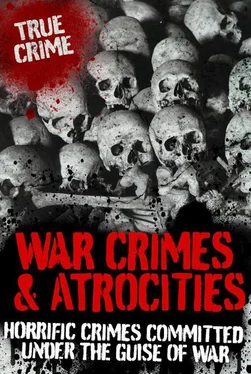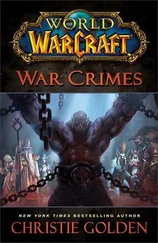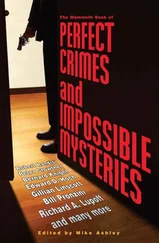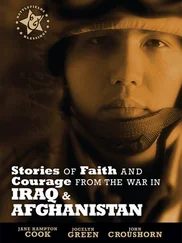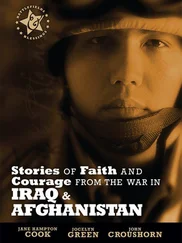POLITICAL UNREST
After their initial delight in succeeding to take power and Rwanda’s independence in 1962, the inexperienced Hutus started to face turmoil within their own government. Tension built up and, all the while aware that the Tutsis might retaliate, the Hutus started to take repressive measures. In 1990, the RPF rebels seized the moment and attacked, forcing the Hutu president, Juvénal Habyarimana into signing an agreement that sanctioned the Hutus and Tutsis would have equal power. Hutus, however, fiercely opposed any Tutsi involvement in running the government and ethic tensions heightened. The situation was made even worse when a plane carrying Burundi’s president, Melchior Ndadaye, was shot down.
Aware that the fragile ceasefire that had been put in place in 1993 was about to crumble, the UN sent a peacekeeping force of around 2,500 multinational soldiers to try and stop the aggression that was building up. The Hutus, who had openly accused the Tutsis of assassinating their president, decided that the only solution was to annihilate the entire Tutsi population. In April 1994, amid ever-increasing threats of violence, the Rwandan president, Habyarimana and the new Burundi president, Cyprien Ntaryamira, held peace meetings with the Tutsi rebels. The final straw in the camel’s back took place on 6 April, when a small plane carrying the two presidents was shot down by ground-fired missiles as it approached Kigali airport. Their deaths plunged Rwanda into a frenzied state of political violence and the genocide began.
THE GENOCIDE
Just 24 hours after the plane was shot down, roadblocks started to appear on the roads around Kigali, manned by the Interahamwe militia. The Interahamwe (meaning ‘Those Who Stand Together’ or ‘Those Who Fight Together’) was the most important of the militias formed by the Hutus. Tutsis were immediately separated from the Hutus and literally hacked to death with machetes on the side of the road. Victims who could afford to pay were given the option of dying from a bullet. Specially organized death squads, working from carefully prepared lists, went from neighbourhood to neighbourhood in Kigali. Not only did they murder all the Tutsis, but they picked on moderate Hutus as well, including their prime minister, Agathe Uwilingiyimana. The prime minister was protected by Belgian guards, who the Hutus arrested, disarmed, tortured and then murdered, which prompted the Belgians to withdraw the remainder of its UN troops – just what the Hutus wanted.
The violence spread like wildfire, moving from Kigali into the surrounding rural areas. Via the radio, the government urged Tutsis to congregate at churches, schools and stadiums, promising that they would make these safe places of refuge. Little did they realize that by gathering in large groups they actually made themselves easy targets. Surprisingly, some of the helpless civilians were able to ward off attacks by simply using sticks and stones – that is until the joint forces of the Rwandan army and presidential guard were brought in to wipe them out with machine guns and grenades. Against this kind of attack they had no defence. In just two weeks, by 21 April, it is thought that as many as 250,000 Tutsis and moderate Hutus had been slaughtered, making it one of the most concentrated acts of genocide ever witnessed by the world.
What made the genocide even more atrocious is the fact that it was aided and abetted by government officials, who even bribed the killers to do their dirty work. Local officials assisted in rounding up the victims, making suitable places available for the Hutus to carry out their slaughter. Men, women, children and babies alike, were killed in their thousands in schools and churches, in some cases the clergy conspired with the killers. The victims, already frozen by fear, had to bear the fact that they were being killed by people they knew – neighbours, fellow workers, sometimes even relatives by marriage.
The Interahamwe weren’t driven by drink, drugs or even mindless violence, but a fanatical dedication to fight for their cause. They were cold-blooded killers who were urged not only by the media, but also by their own government to wipe out the Tutsis. Participants were often given incentives, such as money or food, and were even told they could keep the land of any Tutsis that were killed.
The power of the radio was instrumental in spreading the killing frenzy. It is important to point out that one of the first things Africans buy when they get a job is a radio and even the poorest houses listen intently to catch snatches of government broadcasts. It is not surprising, therefore, that when the Hutus heard the voices coming through the radio to ‘kill, kill, kill the Tursi minority’, the Hutus responded and literally did as they were told.
One fact that is not widely publicized about the Rwandan genocide is that it was mainly directed at the young, male Tutsi population, fearing they were members of the RPF guerrilla force. However, as the days went by women and children were also victims. Survivors later told stories of being raped either by individuals or gangs, sometimes using sharpened sticks or gun barrels. Sometimes they were sexually mutilated, or they were forced to marry to become nothing more than sex slaves.
THE MASSACRE IS OVER
The killing didn’t stop until July when the RPF finally managed to capture Kigali, causing the collapse of the government. They declared a ceasefire and as soon as the Hutus realized that the RPF had been victorious, an estimated two million fled to Zaire (now the Democratic Republic of the Congo). It wasn’t until the killing stopped that the UN troops and aid workers arrived to try and restore the basic services.
Why was it that as the killing intensified, the rest of the international community deserted Rwanda? Erratic media coverage while the genocide was taking place conveyed the false notion of two ‘tribes’ of African ‘savages’ mindlessly killing each other as they had done for many years. As a result, there was little public pressure in the West for governments to intervene. Controversy has raged ever since over the role of foreign governments and the UN in allowing the genocide to proceed. It wasn’t until 7 April, 2000, the sixth anniversary of the massacre, that Belgium’s prime minister apologized for the international community’s failure to intervene. He told a crowd of thousands at the site of a memorial that, ‘A dramatic combination of neglicence, incompetence and hesitation created the conditions for the tragedy’.
At the beginning of the First Congo War in 1996, many Tutsi refugees returned to Rwanda, which instigated the start of the long-awaited genocide trials. The UN formed the International Criminal Tribunal for Rwanda (ICTR) and in September 1998, they issued their first charges on genocide.
In Rwanda itself, approximately 120,000 people were jailed on allegations of having taken part. Many have since died due to the appalling conditions and overcrowding in the jails. By the end of April 2000, about 2,500 people had been sent to trial and of these about 300 received death sentences.
Three journalists from Rwanda went on trial in 2001 for war crimes, because they were the voices behind the radio broadcasts that urged the Hutus to kill. This is reminiscent of the Nazi editor, Julius Streicher, who was sent to the gallows at Nuremberg in 1946.
HAS A LESSON BEEN LEARNED?
The scars of the genocide and the subsequent reprisals will probably always stay with the Rwandans, and even worse it could provoke another round of mass killing. With the economy badly damaged and little hope of a quick recovery, many Tutsis still feel that the only way to rebuild their lives is to repress the Hutus. The Hutus, who once again feel downtrodden, because they have been labelled ‘guilty’ for the last massacre, feel that no one cares about what happens to them under the latest Tutsi-led government. Extremists on both sides believe that the only solution is complete annihilation of the other side, and many believe they are preparing for another slaughter. It appears despite all the pain and suffering, the Rwandans have not learned an important lesson – that violence simply doesn’t pay.
Читать дальше
